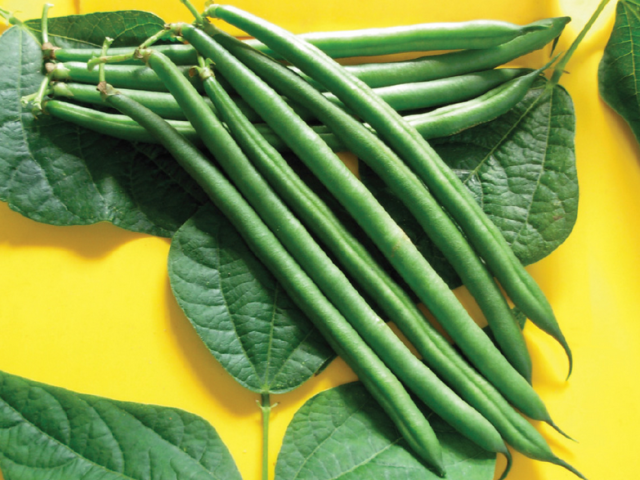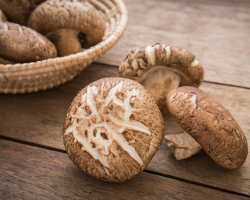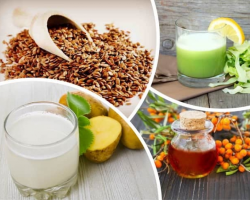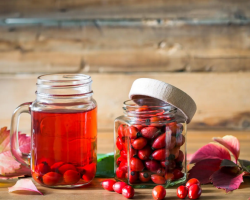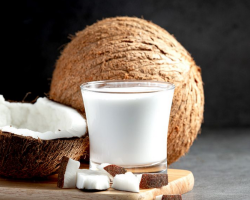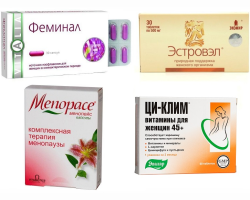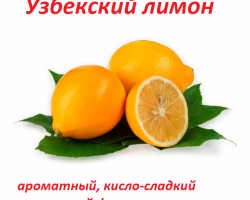Osparage beans differs from a simple patch. It is healthy and very tasty.
Content
- Real asparagus: what is it, what does it look like, what do they do, useful properties, how to cook and eat?
- Otkryan beans: Is it a starchy or unclaimed vegetable?
- What is the difference between asparagus and asparagus beans?
- Office beans and vegetable patch beans: what's the difference?
- What is the difference between asparagus beans and ordinary beans?
- What is the difference between asparagus beans and wigna?
- Video: Types of beans. Choose seeds. Grain and asparagus beans
- Video: asparagus beans growing and care
- Video: Pitch (asparagus) beans - all the pros and cons. The benefits and harms of patching beans
To prevent confusion, it should be clarified. There is an asparagus plant “Family of the Asparagus”, Korean asparagus “Fuj”, a variety of patch beans - “asparagus beans”. These are two completely different plants similar in name. And the Korean asparagus is not a plant at all.
Read on our website another article on the topic: "Picky beans: recipes for cooking". You will learn how to cook deliciously fresh patch beans and frozen with mushrooms, vegetables, egg, garlic, pork, beef, chicken, in batter.
From this article you will learn what a real asparagus is, how it differs from asparagus beans. We will also tell you how the usual beans and asparagus are different. Read further.
Real asparagus: what is it, what does it look like, what do they do, useful properties, how to cook and eat?
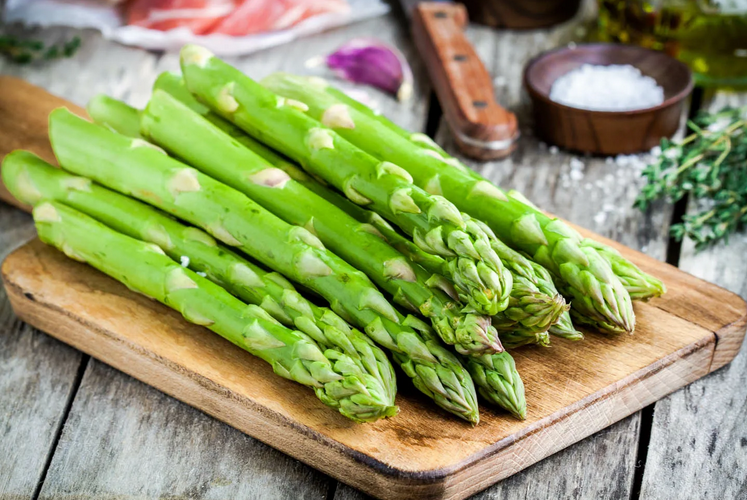
The real asparagus has another name - asparagus. There are green, white and purple. On sale is often green. You can buy fresh and frozen. Culture belongs to one of the early spring. What does it look like, what are they doing, useful properties, how to cook and eat?
- For eating, delicate shoots of not more than 20 cm with unsuccessful leaves are used.
- White is considered more tender and enjoyable in taste.
- The difference lies in the landing method. Planted in the sand and sprouted sprouts give a white asparagus if they are cut until the moment appears above the surface.
- The plant gets green as a result of photosynthesis.
- Violet grows under the sun, the stem is green, and the crown is purple. There are no special differences in taste from green. It's just the rarest variety.
Read on our website another useful article on the topic: "What is asparagus, what does it look like?". You will learn a lot of information about green, white, soy, drug, as well as the benefits and harm to the body, value, composition, vitamins, calorie content per 100 grams.
Asparagus refers to medicinal plants. Therefore, young shoots are rich in various vitamins:
- There is a group of vitamins B, C, there is A and E.
- The shoots contain fiber and mineral elements: iron, magnesium, potassium.
- There is also folic acid.
- The calorie content is 21 kcal per 100 g, but the content of certain nutrients can cover up to 20% of the daily norm.
There are many methods of preparation:
- A good asparagus grilled, boiled in a soup, can be cooked steamed or baked in the oven.
- As a side dish, it is used for meat and fish.
- Her delicate taste is suitable for preparing the filling of the pie and as an ingredient for risotto and paste.
- You can add to the vegetable stew and cream Sup.
- With the sauce is worthy to be a separate dish.
- They eat asparagus in raw form, adding young shoots to salads.
It is worth knowing: It is very important not to digest when preparing. Therefore, the shoots of asparagus should be prepared in an upright position. A thicker stem is cooked in water, and a steam processing will be enough for a delicate elite.
For the price of asparagus, and remains a fairly expensive product. Although the plant is and perennial “from 8 to 20 years”, you can get shoots only 2-3 years after planting. Their collection is carried out only by hand.
Read on our website an article on the topic: "How and how much to cook the chicken beans frozen and fresh in the soup, for salad?".
Korean asparagus is more affordable. It is prepared from soy milk foam. It has many beneficial substances, because it is also of plant origin, and the substances necessary for the body contained in soybeans are also in it. It can be dried, and before cooking, soaked or prepared raw. Soups are boiled with it, added to vegetable and meat dishes. Dried dried can be stored for a rather long time.
Otkryan beans: Is it a starchy or unclaimed vegetable?
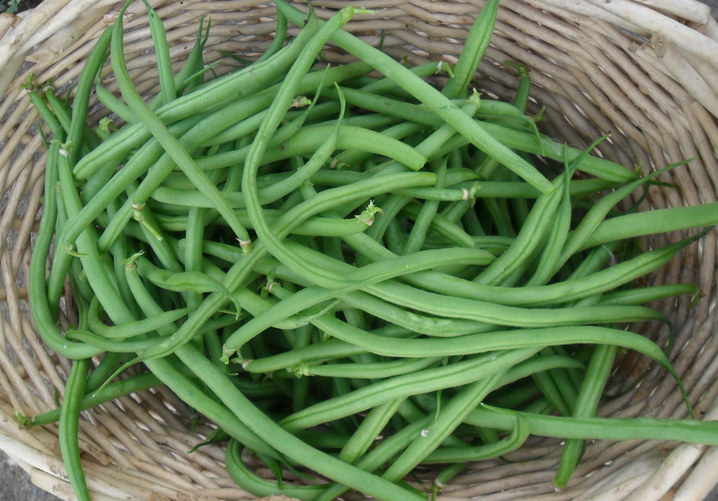
Office beans belongs to legumes. It is known that they are all rich in starch, with the exception of soy. This is a starchy vegetable.
- Per 100 gr. The product contains from 43 to 47 gr. this substance.
Starch is a polysaccharide, in the body it is converted into sugar. Those who are configured for losing weight should not use a large amount of beans in the diet. But if you cook the dish, it is worthwhile to use “light” fats in addition: sour cream, cream. So the product is better absorbed in the body. But it is not worth neglecting completely. Basol dishes are not only tasty, but also beneficial for their chemical composition of minerals and vitamins.
What is the difference between asparagus and asparagus beans?
Asparagus beans received a name because of similarity to real asparagus. What is the difference?
- These are just young unripe pods of ordinary beans.
- When freezing or cooking, they cut cylindrics by 3-4 cm, and in finished form they look like shoots of asparagus. These are different species of plants.
- The asparagus belongs to a vegetable containing a minimum amount of starch, unlike beans.
- The shoots of asparagus are juicy and delicate, and the pods of asparagus beans can be harsh.
- The asparagus sold in our stores is imported, and asparagus beans can be grown in the garden or summer cottage.
The time starts to collect asparagus is April, and asparagus beans ripen by the end of June.
Office beans and vegetable patch beans: what's the difference?
Office beans are sometimes called Zelenogrochkova. These are unripe, fleshy, bright green pods of ordinary vegetable beans. It is called asparagus until a round cross section is on the fault of the pod. When it becomes oval, it is already a vegetable patch beans. This is the difference. You should not miss the moment to get this product.
Unripe pods are collected not older than 8-10 days. Thicker one can be used for conservation. Such beans retains its taste and beneficial properties when freezing.
What is the difference between asparagus beans and ordinary beans?
The past period of ripening is asparagus beans, it becomes simple or ordinary beans. The ripened pods are called spatulas. They become flat, with beans that are well protruding under a dense skin. Ripe beans requires longer cooking. And completely dried - soaking a few hours before cooking.
What is the difference between asparagus beans and wigna?
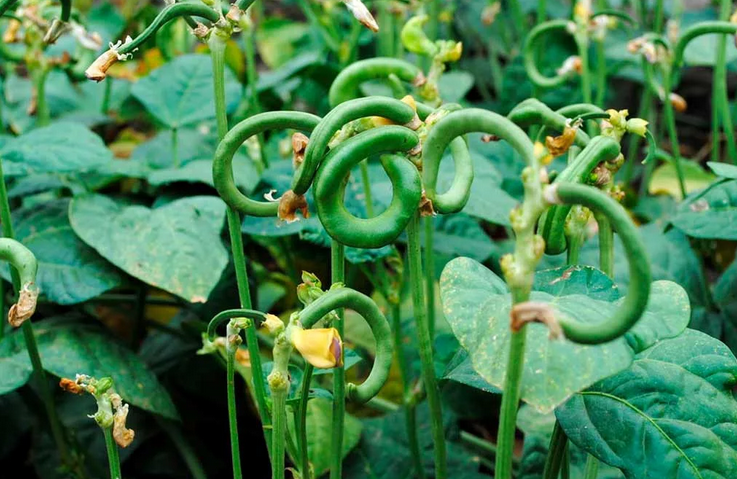
Vigna is a herbaceous plant, brought to us from Africa. Refers to the Bobov family. And although it looks like asparagus beans, it differs at a biochemical level. It can rather be called a relative of Urd and Masha.
- The ripened pods are not more than 2 cm in diameter, and grow up to 100 cm long.
- Inside there are many seeds, small beans the size of a wheat grain.
- But just like a bean pod, it has 2 sashes.
- In the warm climatic zones of our country, Wign is already grown in gardens.
In African countries, both pods and plant leaves are used for food. In Asia, pods are prepared exclusively. In Europeans, this plant is called cow peas. It is canned, boiled, stewed, and freezed. They come up with a lot of delicious dishes, adding a wign to the recipe. Unlike asparagus beans, rich in protein and can be a substitute for meat and fish. Bobs of Vigna do not require preliminary soaking. This plant can be a good addition to the usual vegetables on our table. The only condition is that heat treatment is required.
It is worth trying asparagus or diversify the family menu with asparagus beans. It is very tasty and healthy.
Video: Types of beans. Choose seeds. Grain and asparagus beans
Video: asparagus beans growing and care
Video: Pitch (asparagus) beans - all the pros and cons. The benefits and harms of patching beans
Read on the topic:

